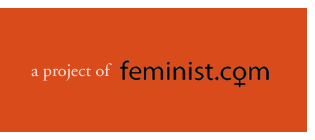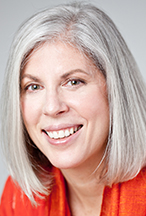 |
 |
Spiritual Activism Seeing the Ties That Bind
Us Together < back to Spiritual Activism main page
Principle 2. Interdependence We see relationships to others and the world in the context of our interdependence. We no longer see the “enemy” or “other” as isolated from ourselves. This does not strip away our ability to recognize and name injustice, but helps us understand that the root of both suffering and joy ultimately circles back to us because of our unity as a whole organism.
One of our favorite mealtime blessings is to name everything that contributed to the table’s bounty. We thank whoever cooked, shopped, farmed, packed, transported, shelved and sold the food in the store. We thank the sun, the earth and the Great Spirit for growing the food, and we thank the food itself. Then we dig in. Recently when we had some guests for dinner, the blessing took on a fun game-like twist because the list just kept growing and growing -- it included important historical events, all the elements of the atmosphere, our great ancestors, and on and on. My daughter nailed the heart of our interdependent nature when she said, “I guess we have to thank everything that has ever been and everyone who has ever lived because it’s all connected.” Most people would say they have a yearning for feeling connected to others and to the larger “web of life,” or to be in union with something greater than themselves. Our interconnectedness has been described powerfully and poetically in our religious, spiritual, philosophical and scientific teachings. Yet we often live as if it isn’t true. We forget that “no [person] is an island.” The rapid speed and technological basis of contemporary life make it very difficult to see the big picture of what’s happening around us and to understand our own part in the larger world. While technology serves mighty purposes and connects us in profound ways, it also fosters a real disconnect between the cause and effect of our actions. For example, we can ship our garbage far from where we live without knowing where it’s buried; shop for things made half-way around the world without knowing the working conditions of those who made them; eat food grown in other states without knowing how the food was cultivated; and, most horrifyingly, drop bombs remotely that kill people without knowing the pain we have caused. When we live in an “out of sight, out of mind” landscape, we lose touch with the natural feedback loop that reflects the impact we are having on the people and environment around us. When we lose touch with the feedback loop, we forget the truth of our interdependent nature, which in turn, allows us to hurt others without realizing that we are ultimately hurting ourselves. We lose sight of the fact that the separation we feel from others is something we have built with our own mind. Since technology is just a human tool, the real root of the disconnect is our own state of awareness. And awareness is something we can cultivate! When we see each other as members of the same family and connected in a greater web of life, our empathy for each other and for all life grows. So, too, does our interest in helping each other. As Tibetan Monk Thich Nhat Hahn says, once we feel a sense of relatedness, then our capacity to care for each other expands. To illustrate this notion of interconnectedness, he tells a wonderful story about one hand accidentally hammering his other hand instead of the nail it was holding:
“[My right hand] put the hammer down and took care of my left hand in a very tender way, as if it were taking care of itself. It did not say, 'Left Hand, you have to remember that I have taken good care of you and you have to pay me back in the future.' There was no such thinking. And my left hand did not say, "Right Hand, you have done me a lot of harm -- give me that hammer, I want justice.' My two hands know that they are members of one body; they are in each other." The two hands know without any doubt that they are part of the same body, creating a strong motivation for caring for each other. So why don’t we bring that same kind of knowing and motivation for caring for each other to all of our relationships? Part of our confusion may come from our “holon” nature, a term used by Philosopher Ken Wilber to capture the idea that people, like all other systems in the universe, are both independent and dependent at the same time. While we are good at knowing ourselves as independent beings, we hide from our dependent nature. From our first breath we are taught about our independence, and from there our entire education system is based on teaching people how to take care of themselves. Our American culture rests on the notion of self-reliance and rugged individualism with an expectation that everyone can “pull themselves up by the bootstraps.” While it is true that self-responsibility is a necessity for survival, we have left behind an important aspect of what the “self” actually is – the self is fundamentally connected to all else! So, we need to apply the same diligence in caring for our individual beings as we do for all that is around us. Self- responsibility means to take care of all that is -- our earth, our fellow creatures, and our entire human family. Taking care of everything can seem like an overwhelming and unrealistic suggestion. In some ways it is almost impossible to imagine how we could live -- eat, work, raise our families -- without doing harm to the larger world around us. But there have been cultures in history and there are cultures now living with a high level of integration with the world around them that we can learn from. The key is to bring a balanced approach to caring for ourselves as independent individuals, and ourselves as dependent parts of the larger the world. An important step towards living in greater balance with all that is around us is cultivating an awareness of our interconnected nature. Listed below are several simple exercises that can increase an awareness of our interconnectedness. This list may seem a little “been there, done that,” but it is in the doing and the practice of being aware that we cultivate awareness -- which is always easier said than done: Consumer Goods: Pick a consumer item you use often and research where it comes from and where it goes when you are done with it. Food: Research your favorite food. Is it healthy? How is it cultivated? Is it in abundant supply? What are the working conditions of those who produce it? Work: What are the ripple effects of the work you do? Who and what do you rely upon for your livelihood and who and how do others rely upon you for their livelihood? People: Become a student of interaction. How do other people impact your mood, feelings, and behavior? Pay attention to how your mood impacts your family, co-workers, or friends. Contemplation: Spend time in meditation or quiet contemplation and notice how it impacts how you feel afterwards and how you interact with others afterwards. Environment: Use a carbon footprint calculator to estimate your impact on the environment. Pay closer attention to how much garbage you generate and find out where your garbage goes after it leaves your home and your local dump. Public Policy and Taxes: Pick any national issue you care about and find out exactly how much the US government spends on it and what the key policy issues are. Find out exactly where your representatives stand on that issue. Global Affairs: Pick a country you know nothing about and do some basic research about their daily customs including how they greet their children at birth, how they celebrate the seasons, and what drives their economy? There are countless ways to raise our awareness of our interconnectedness. The beauty and promise of committing to this kind of practice is that over time it naturally leads to greater compassion for each other. As we grow in our understanding of how we are bound together, we become more careful with each other and with the earth. When we realize that it feels better to comfort the other hand than to isolate it or be angry at it or hurt it even more, we will be on the path to a stronger, healthier web of life. Carla Goldstein, J.D., J.D., is Omega's Director of External Affairs and Director of The Women’s Institute at Omega. Carla is an attorney with 20 years of experience in public interest advocacy and has worked extensively in city and state government on issues related to women's rights, poverty, public health and social justice. She has contributed to over 100 city, state and federal laws. Carla has appeared on local and national radio and television and makes public presentations to a wide range of audiences on issues related to women’s empowerment and activism. Prior to joining the Omega Institute, Carla was the VP for Public Affairsat Planned Parenthood of New York City where she directed the agency's advocacy and strategic communications work. She also served as the founding director of the PPNYC Action Fund, the political arm of PPNYC. For eight years Carla was an adjunct professor at CUNY Queens College, where she taught, “Law and Social Justice,” a course designed to empower students to be effective advocates for progressive social change. As part of Omega’s Faculty, Carla teaches “Spiritual Activism,” a workshop designed to help people develop their activism in creative ways that align with their values and lives.

Founded in 1977, Omega is the nation's largest holistic learning center whose mission is provide innovative educational experiences that awaken the best in the human spirit, providing hope and healing for individuals and society. Every year more than 20,000 people attend workshops, retreats, and conferences on its 195-acre campus in the countryside of Rhinebeck, New York, and at other sites around the country. The Women’s Institute, a dynamic new component of Omega, is dedicated to empowering women around the world. It has grown out of the momentum created by the annual Women and Power conferences that Omega Institute has presented in partnership with V-Day since 2002. It seeks to sustain throughout the year the community and inspiration generated at the conferences. Women’s deep wisdom is essential to the creation of a more sustainable and loving culture in every facet of life, from the personal to the political. The Women’s Institute provides opportunities for women and men to inspire and strengthen their visions and authentic voices through unique learning and community building experiences. For more information, visit www.eomega.org.
|
||
Home | About Us | Features | Ask
Our Team | Inspiration
& Practice | Women of Vision | Resources
Copyright 2010 Feminist.com. All rights reserved.
